13 Unhealthiest Carbs To Stay Away From
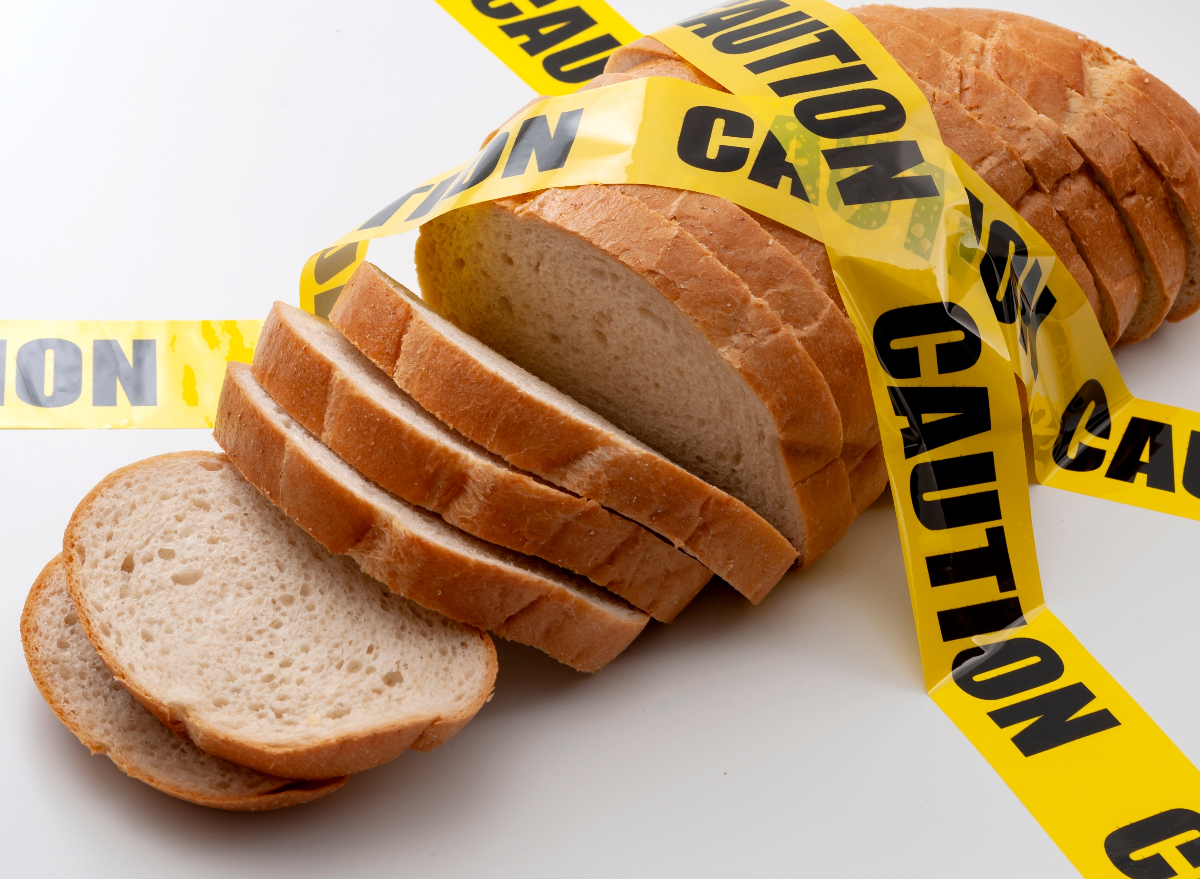
When you hear the word “carbs,” chances are you immediately think of foods like pasta and bread, or fad diets that call for eliminating all carbs to facilitate rapid weight loss. But carbohydrates come in many forms, and they serve as the main source of energy for your nervous system. Before choosing which carbs to incorporate into your meals and snacks, it is important to know they are not all created equally. For example, your body will respond differently to the carbs in a soda compared to those in fruit or beans. All carbs can be part of a healthy diet, but there are some you should limit in your daily eating habits.
The carbs that are generally thought to be the unhealthiest are forms of added sugar. The granulated white sugar you bake with, sweetened syrups you add to your coffee, and other sweeteners added to common foods often are made up of added sugar. There is no shortage of research showing the negative outcomes of a high-sugar diet. Increased blood triglycerides, high blood sugar, and elevated blood pressure are just some of the outcomes noted with a diet rich in added sugar.
When choosing carbs in your diet, look for options without added sugar. On a nutrition label, you can see this nutrient clearly listed, making it easy to compare brands and options. The American Heart Association (AHA) recommends women limit their intake to 25 grams per day, while men should aim for no more than 36 grams. You should also look for carb-containing foods that provide fiber. Another nutrient listed in the nutrition facts, fiber aids in digestion and increases your feeling of fullness. When in doubt, stay away from (or limit) these 13 unhealthiest carbs. And next, check out our story on the 20 Best Healthy Carbs for Weight Loss.
Jams
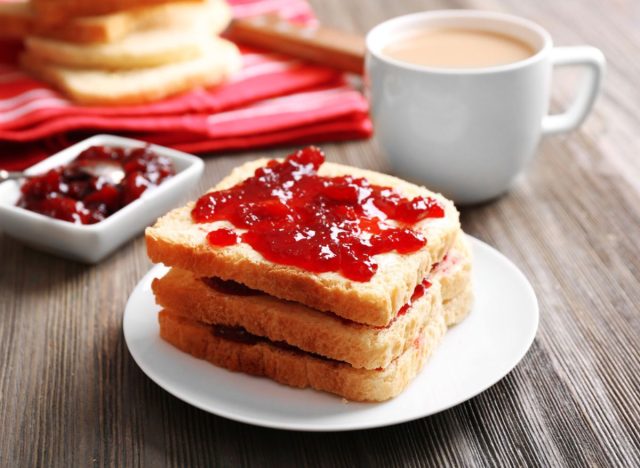
Jarred jams and jellies can be a concentrated source of added sugar. Although these are generally made with fruit, you will find some brands use more added sugar by weight in their products than actual fruit. With some options coming in at 50 calories per tablespoon, all coming from carbohydrates, these empty calories are unlikely to leave you satisfied after your morning toast. Skip the store-bought jelly and instead, try making your own at home. This can easily be done by heating frozen berries, mixing in chia seeds, and mashing with a fork. This creates a chunky, naturally sweet spread loaded with nutrients, and foregoes any added sugar.
Flavored yogurt
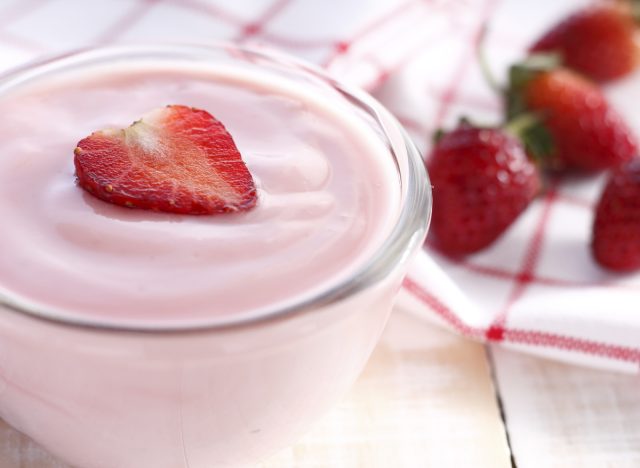
Plain yogurt can be a great source of important nutrients, like calcium, protein, and probiotics. Unfortunately, many flavored yogurt options are also loaded with added sugar. While this doesn’t negate the positive attributes of yogurt, it does make flavored yogurt a less ideal option. Instead of flavored yogurt, buy plain yogurt and add your own flavoring with fresh fruit (or a spoonful of your homemade jam!). If you prefer store-bought flavored yogurt, look for options without added sugar. In many cases, these options are sweetened with a zero-calorie sweetener, like stevia or monk fruit.
Pastries
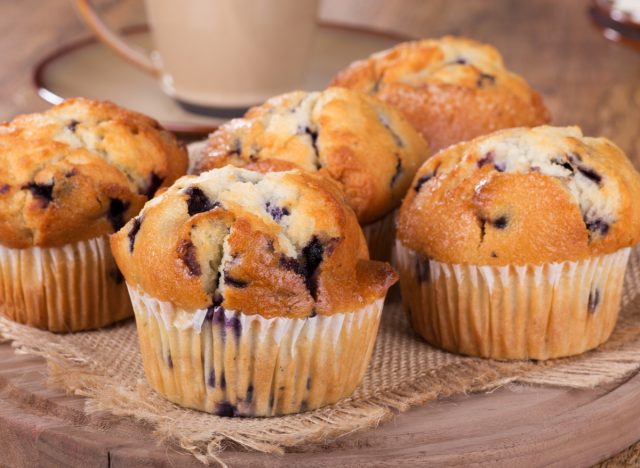
Who doesn’t like a freshly baked muffin or weekend donut? While the sugar content of some glazed donuts or chocolate-filled croissants is much more obvious, you may be surprised by the sugar content of other pastries. Commercially prepared muffins are a notorious source of added sugar, and many are exceptionally high in fat. This makes them an unhealthy source of carbs, and a food you should limit in your diet. Instead of store-bought muffins, try making your own at home using whole wheat flour and honey in place of traditional added sugar. Load in some shredded carrots or zucchini for an added fiber boost to make them even healthier.
White bread
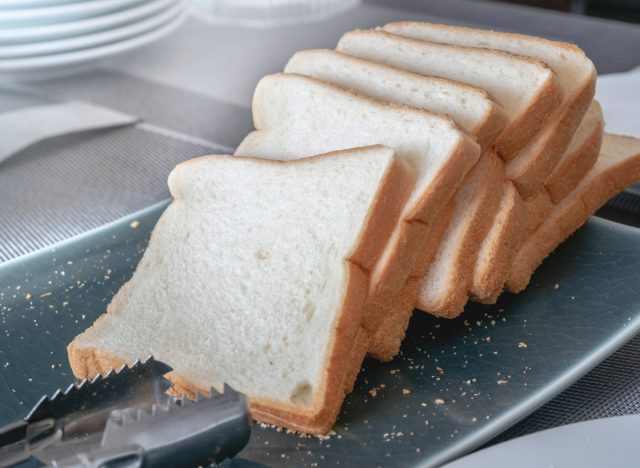
Fluffy bread is undeniably enjoyable, but it lacks many important nutrients. In most white breads, you won’t find fiber or much protein, and you may even see some added sugar. Although a single slice of white bread is often lower in calories than a slice of whole-grain bread, you may be off with the higher calorie count. Whole grain options typically have higher fiber and protein content and can contain more essential nutrients, like B vitamins. When choosing whole grain bread, keep an eye out for added sugar and choose options with at least 2 grams of fiber.
Flour tortillas
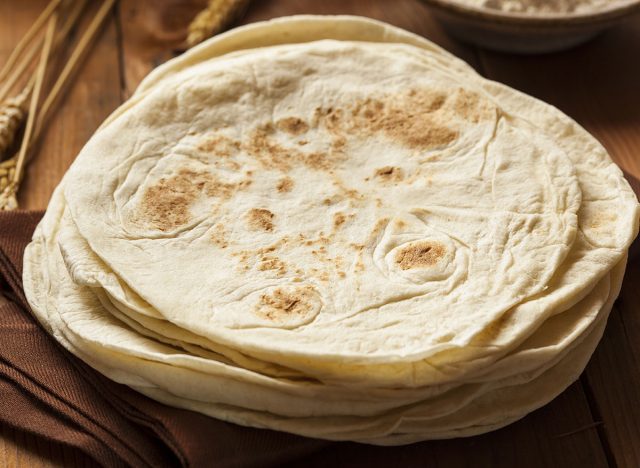
Often found filled with gooey cheese, flour tortillas are no doubt a household staple for many. Similar to white bread, flour tortillas are often lacking fiber and can contain added sugar. Products made with white flour, like white bread and flour tortillas, are usually enriched with some vitamins and minerals but can be less filling than whole wheat flour options. When choosing tortillas, look for whole wheat options or go with corn tortillas that are typically made with few ingredients, making them a healthier source of carb.
Fruit snacks
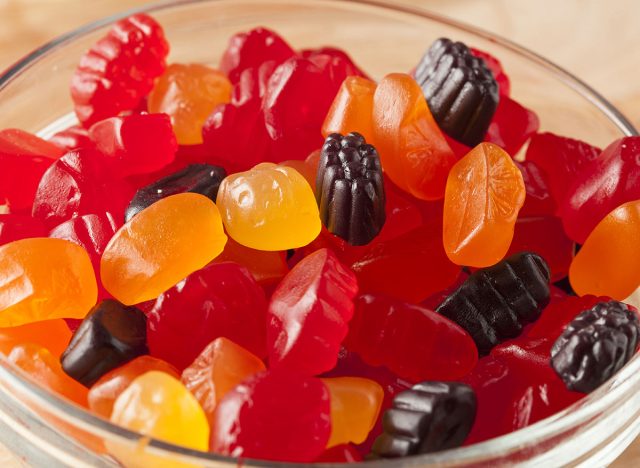
A staple of many packed lunches, fruit snacks may as well be considered candy. While you might see “made with real fruit” on the package of some fruit snack varieties, don’t let that fool you. Sure, pureed fruit may be the first ingredient, but you are likely to find a couple of forms of added sugar throughout the ingredient list. Additionally, you’ll often find food dyes and colorings, making these sugary treats even more unhealthy. You’re better off skipping fruit snacks altogether and instead opting for fresh or canned fruit made without added sugar.
Sweetened cereal
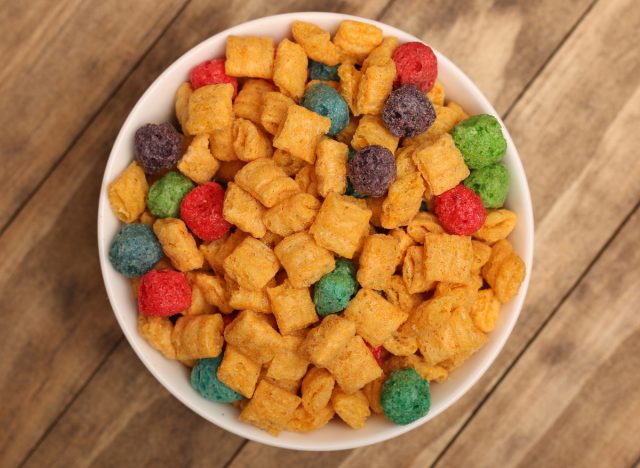
With so many cereals available on the market, it can be tough to decipher the good from the bad. When choosing cereals, first look at the added sugar content. Ideally, this number is lower than 5 grams per serving, and as close to zero as possible. In addition to keeping an eye on added sugar, look for options that contain at least 2 grams of fiber, and more would be even better. Sugary cereals might make for a quick breakfast, but they can lead to a quick spike and fall of energy, resulting and a craving for more sugar. Skip the sugar and choose fibrous options for more sustained energy.
Candy
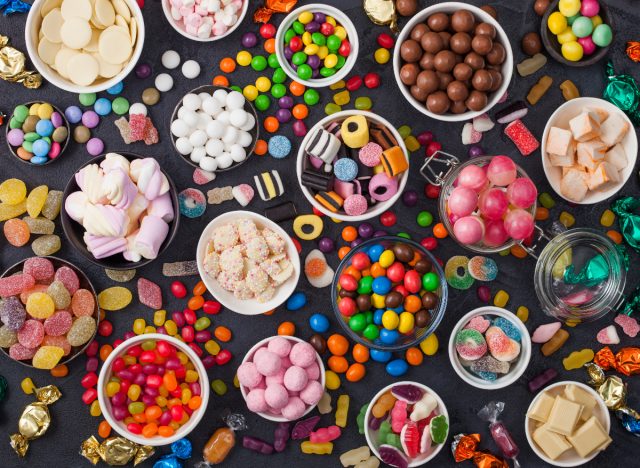
An unsurprising source of sugar, candy may be one of the worst sources of carbohydrate. Not only does fruit and chocolate-flavored candy pack in lots of added sugar, but you’ll find food dyes and coloring, saturated fat, and high calorie counts in many options. Additionally, candy lacks fiber, vitamins, and minerals, making it a poor source of calories. An occasional mini-size serving of candy is fine, but swap your daily candy habit with healthier options to satisfy your sweet tooth. Chocolate chips made with minimal added sugar are available, and homemade frozen fruit pops are another great sweet treat to replace candy.
Ice cream

Similar to candy, ice cream packs calories, added sugar, and saturated fat. A single half-cup serving could pack over 200 calories, and let’s get real, most of us are serving ourselves a larger portion. While frozen yogurt is lower in calories due to lower fat content, it is also a source of added sugar. Instead of traditional ice cream, try making “nice cream” at home by blending frozen bananas with some nut butter and topping with low-sugar chocolate chips.
Sweetened coffee

A plain cup of black coffee is very low in calories and contains no sugar. However, add in flavorings, syrups, and drizzles, and you get a drink loaded with added sugar. Popular sweetened coffee drinks can pack hundreds of calories and more sugar than is healthy to consume in an entire day. If black coffee doesn’t cut it for you, try sweetening your coffee with stevia, or use milk to cut the acidity instead of sugar. An unsweetened latte is a great option that provides protein with no added sugar, making for a healthier coffee drink.
Syrup
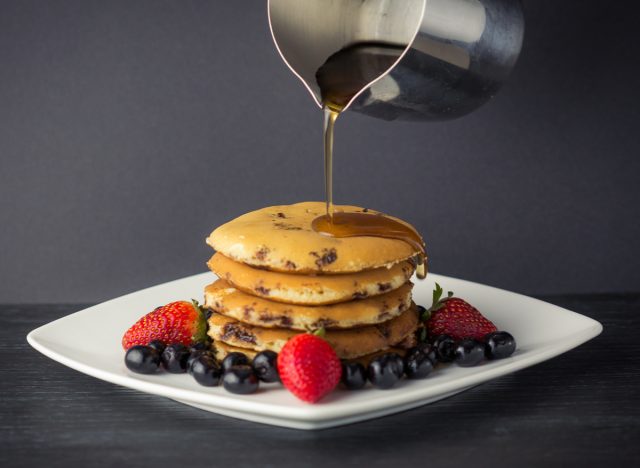
Drizzled on pancakes and waffles, and used in baked goods, flavored syrups are loaded with added sugar. Maple-flavored syrup may be one of the most popular options in this category, and some of the most common brands include added sugar as the first ingredient. If you love the flavor of maple, stick with 100% maple syrup. Although it is still considered an added sugar, you’ll at least be skipping worrisome manufactured sugar and other artificial ingredients found in flavored syrups.
Canned fruit
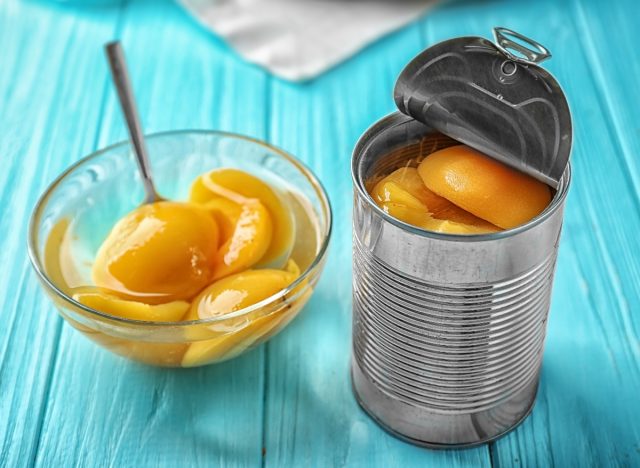
A convenient source of fruit, canned fruit is another common source of added sugar. Not only can some options pack over 20 grams of sugar in a single serving, but most options are quite low in fiber compared to fresh fruit. This double whammy makes canned fruit an unhealthy source of carb. Fresh fruit is best, but frozen fruit is a great option as well. In most cases, the fruit is frozen in a way that keeps nutrients intact, providing you with a much more nutritious option than canned varieties.
Juice
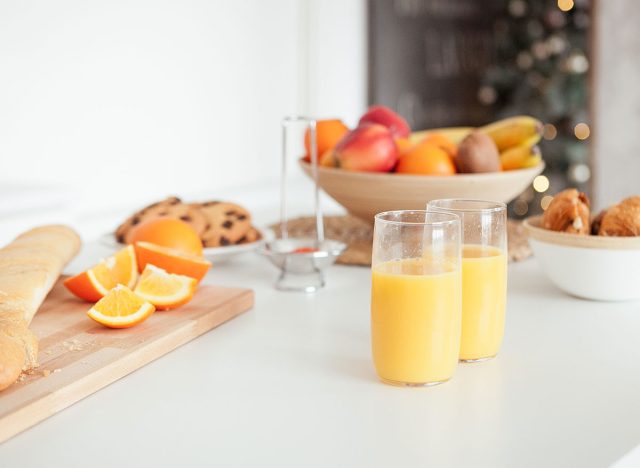
Another source of empty calories, juice is all carbohydrate, and many options are loaded with added sugar. Not only is juice unlikely to increase your satiety with a meal, but you may experience the same blood sugar spike and dip often noticed with other sugar-dense foods, like cereal. If you can’t start your day without your morning glass of OJ, stick with freshly squeezed options. These typically don’t contain any added sugar, making them better than most commercially prepared juices. Even better, opt for the whole fresh fruit instead of the juice to get even more satiating fiber!









